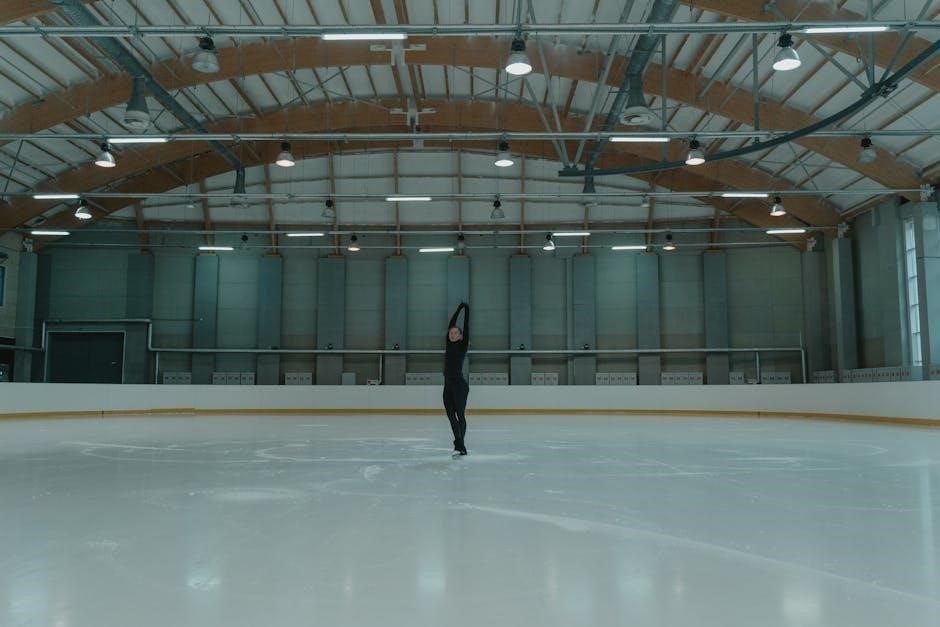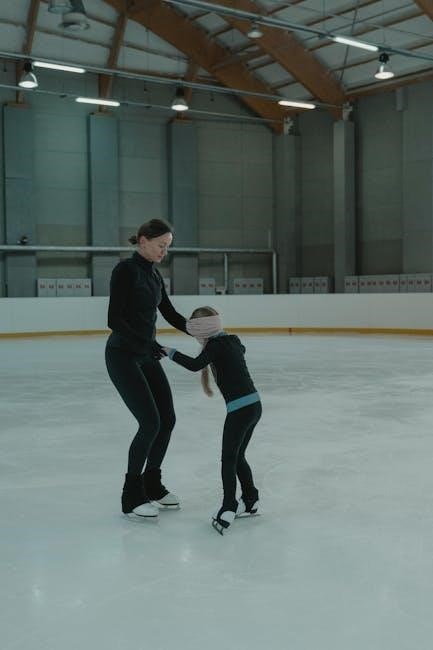convergence insufficiency exercises pdf
- Published
- in PDF
Convergence insufficiency is a condition where eye muscles have difficulty working together, causing symptoms like headaches and eyestrain, often treated with exercises and therapy effectively always․
Definition and Symptoms

Convergence insufficiency is a condition where the eyes have difficulty working together to focus on near objects, typically those closer than 10cm from the nose․ Symptoms often associated with poor convergence include frontal headaches, eyestrain, and difficulty concentrating․ These symptoms can occur when reading, writing, or performing other near-vision tasks․ The condition can cause significant discomfort and affect daily activities, making it essential to understand its definition and symptoms․ By recognizing the signs of convergence insufficiency, individuals can seek proper treatment and improve their quality of life․ The symptoms can vary in severity and duration, but they often interfere with daily activities, making it crucial to address the condition promptly․ Effective treatment options are available, and understanding the definition and symptoms is the first step towards recovery․ Convergence insufficiency can be treated with exercises and therapy․
Treatment Options
Treatment for convergence insufficiency typically involves vision therapy, which includes exercises to improve eye coordination and strengthen eye muscles․ These exercises can be performed at home or in a clinical setting, and are often customized to meet the individual’s specific needs․ In some cases, specialized glasses or prisms may be prescribed to help alleviate symptoms․ The goal of treatment is to improve the ability of the eyes to work together, reducing symptoms and improving visual function․ Vision therapy has been shown to be an effective treatment option, and can be used in conjunction with other therapies to achieve optimal results․ By working with a healthcare professional, individuals can develop a treatment plan that addresses their unique needs and helps to manage symptoms․ Effective treatment can significantly improve quality of life and reduce discomfort associated with convergence insufficiency․ Regular exercise and therapy can lead to lasting improvements․

Convergence Insufficiency Exercises
Exercises improve eye coordination and strengthen muscles, reducing symptoms effectively always with regular practice․
Types of Exercises
There are various types of exercises used to treat convergence insufficiency, including pencil push-ups, dot cards, and computer-based vision therapy․ These exercises are designed to improve eye coordination and strengthen the eye muscles․ Pencil push-ups involve focusing on a pencil as it is moved towards the nose, while dot cards use a series of dots to help the eyes converge․ Computer-based vision therapy, such as AmblyoPlay, uses interactive games and exercises to improve eye coordination and reduce symptoms․ These exercises can be tailored to meet the individual needs of each patient and are often used in conjunction with other treatments․ By incorporating these exercises into a daily routine, patients can improve their eye coordination and reduce the symptoms of convergence insufficiency, leading to improved vision and reduced eye strain․ Regular practice is essential to achieving optimal results․
Effectiveness of Exercises
Studies have shown that exercises are an effective treatment for convergence insufficiency, with significant improvements in symptoms and visual function․ Patients who regularly practice exercises, such as pencil push-ups and computer-based vision therapy, often experience reduced eye strain and improved eye coordination․ The effectiveness of exercises can be attributed to their ability to strengthen the eye muscles and improve the brain’s ability to process visual information․ With consistent practice, patients can expect to see improvements in their symptoms, leading to improved vision and reduced eye strain․ The effectiveness of exercises has been demonstrated in both children and adults, making them a viable treatment option for convergence insufficiency․ Regular exercise practice is essential to achieving optimal results and improving visual function․ Exercises can be tailored to meet individual needs, ensuring optimal effectiveness․

Vision Therapy
Vision therapy is a non-surgical treatment method using exercises and activities to improve vision․
Computer-Based Vision Therapy
Computer-based vision therapy is an innovative approach to treating convergence insufficiency, utilizing software and programs to provide personalized exercises and activities․ This type of therapy can be accessed on computers or tablets, making it a convenient option for patients․ AmblyoPlay is one example of a computer-based vision therapy program that has been shown to be effective in treating convergence insufficiency․ The program uses targeted eye exercises to improve coordination and leverage neuroplasticity, allowing the brain to adapt and strengthen neural pathways․ By using computer-based vision therapy, patients can work on improving their vision in the comfort of their own homes, with regular progress monitoring and adjustments to the treatment plan as needed to ensure optimal results and improvement in symptoms․ This approach has been found to be effective in both adults and children․
Orthoptic Exercises
Orthoptic exercises are a type of vision therapy that can be used to treat convergence insufficiency, focusing on improving eye movement and coordination․ These exercises are typically performed under the guidance of an orthoptist or eye care professional․ The exercises may include activities such as pencil push-ups, dot cards, and other eye movement drills․ The goal of orthoptic exercises is to improve the ability of the eyes to work together, reducing symptoms of convergence insufficiency․ Research has shown that orthoptic exercises can be effective in improving symptoms in both adults and children, and can be used in conjunction with other forms of vision therapy․ By practicing orthoptic exercises regularly, patients can improve their eye coordination and reduce symptoms of convergence insufficiency, leading to improved visual function and reduced eye strain․ Regular practice is essential to achieving optimal results․

Additional Treatment Methods
Treatment methods include specialized glasses or prisms to improve vision and reduce symptoms effectively always․
Specialized Glasses or Prisms
Specialized glasses or prisms are sometimes prescribed to help treat convergence insufficiency, these can be very effective in reducing symptoms such as eyestrain and headaches․ The glasses or prisms work by altering the way the eyes focus on objects, making it easier for the eyes to work together․ This can be especially helpful for people who have difficulty with eye exercises or vision therapy․ The use of specialized glasses or prisms can be a useful addition to other treatment methods, such as eye exercises and vision therapy․ They can help to improve vision and reduce symptoms, making it easier to perform daily tasks and activities․ Overall, specialized glasses or prisms can be a helpful tool in the treatment of convergence insufficiency, and can be used in conjunction with other methods to achieve the best results․ They are available from optometrists and ophthalmologists․
Surgery
Surgery is rarely needed to treat convergence insufficiency, and is typically considered only when other treatments have not been successful․ This is because surgery can be invasive and may have risks and complications․ However, in some cases, surgery may be necessary to correct underlying eye muscle problems that are contributing to the convergence insufficiency․ The decision to have surgery should be made in consultation with an eye doctor, who can help determine the best course of treatment․ Surgery can be effective in improving eye alignment and reducing symptoms, but it is usually considered a last resort․ The goal of surgery is to improve eye muscle function and alleviate symptoms, allowing patients to perform daily tasks and activities with greater ease and comfort, and to improve their overall quality of life with effective treatment methods․ Eye doctors can provide guidance on surgical options․
Convergence insufficiency exercises are effective treatment methods always helping patients․
Importance of Information
Access to accurate and reliable information is crucial for individuals affected by convergence insufficiency, as it enables them to make informed decisions about their treatment options and care․ Having the right information can help patients understand their condition, its symptoms, and the available treatment methods, including exercises and therapy․ This knowledge can empower them to take an active role in managing their condition and improving their quality of life․ The internet has made it easier for people to access information on convergence insufficiency, including exercise routines and treatment options, allowing them to stay up-to-date with the latest developments and research in the field․ By staying informed, individuals can better navigate their treatment journey and work towards achieving optimal vision health․ Information is a powerful tool that can help individuals overcome the challenges associated with convergence insufficiency․
Recommendations
It is recommended that individuals with convergence insufficiency consult with an eye care professional to determine the best course of treatment․ They can provide personalized guidance and recommend specific exercises and therapies to help alleviate symptoms․ Additionally, patients can be advised to practice good eye care habits, such as taking regular breaks when working on computers or reading, and maintaining a healthy lifestyle․ By following these recommendations, individuals can effectively manage their condition and improve their overall vision health․ Regular follow-up appointments with an eye care professional are also essential to monitor progress and make any necessary adjustments to the treatment plan․ This collaborative approach can help individuals achieve optimal results and achieve their vision goals, and it is essential to stick to the recommended treatment plan to ensure the best possible outcomes․ Regular practice is key to successful treatment․
